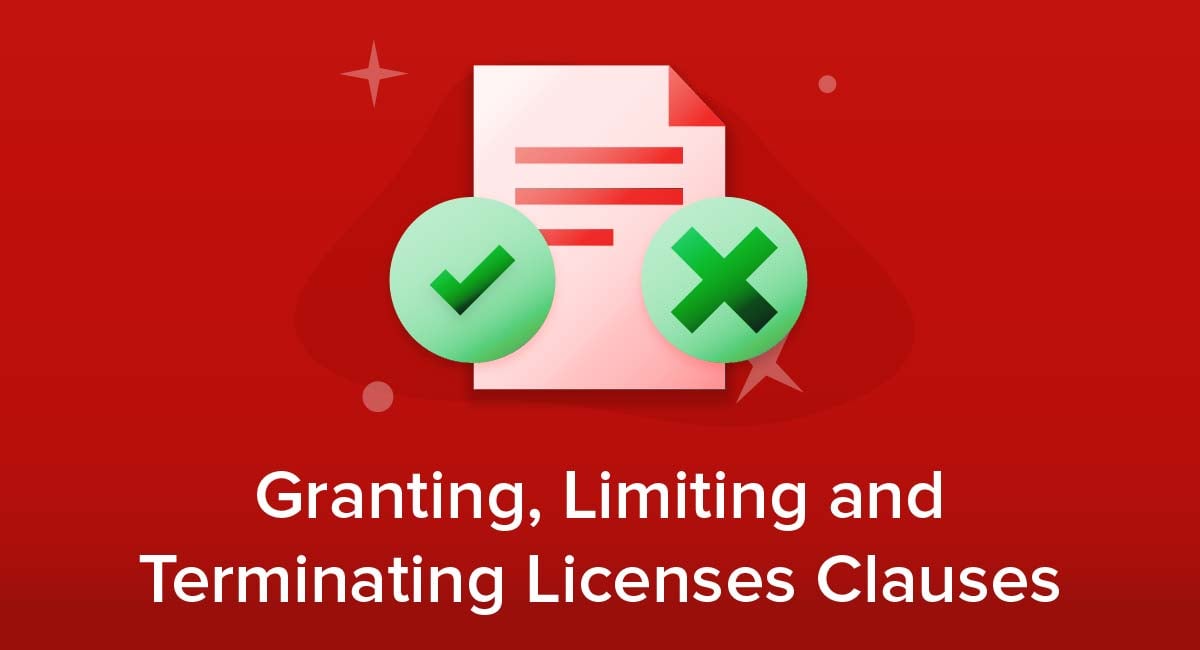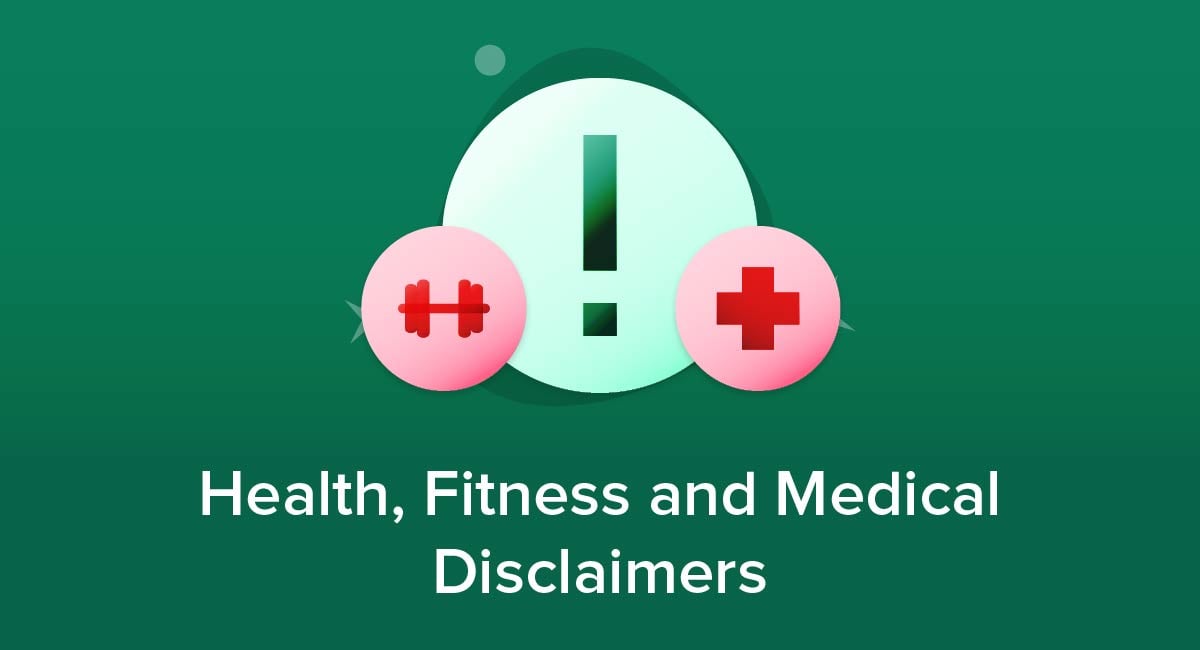
However good your intentions, there's always a risk somebody will take issue with your mobile app. That could lead to costly legal action. Disclaimers can help manage user expectations, reduce the chances they take legal action, and increase the chances you win any court case.
This article will explain what app disclaimers are, the different types you need, and how to create and display your own.
Our Free Disclaimer Generator is designed to help you comply with the requirements of various affiliate programs, such as Amazon Associates. It also includes various disclaimers like medical disclaimer, fitness disclaimer, website disclaimer and so on.
Just follow these few simple steps and generate a Free Disclaimer for your site or your app:
- Start by choosing the "Free Disclaimer Generator" on our site.
-
Then select where your Disclaimer will be used on:
-
Follow with adding your website/app information:
-
Enter the country and click on the "Next Step" button:
-
Continue with building your Disclaimer and answer on questions about your business from our wizard:
-
Now just enter your email address where you'd like your Disclaimer sent and click on the "Generate" button.

You're done! You can copy and paste your Disclaimer code into your website/app, or link to your hosted Disclaimer page.



- 1. What is a Disclaimer?
- 2. Why Should Your App Have a Disclaimer?
- 3. What App Disclaimers Should You Have?
- 3.1. Warranty and Limitation of Liability Disclaimer
- 3.2. Not Professional Advice Disclaimer
- 3.3. Affiliates, Sponsorship and Endorsements Disclaimer
- 3.4. Not Medical Advice Disclaimer
- 3.5. For Informational Purposes Only Disclaimer
- 3.6. Errors and Omissions Disclaimer
- 3.7. Use Disclaimer
- 4. Where Do You Display App Disclaimers?
- 5. Summary
What is a Disclaimer?
A disclaimer is a text notice that gives a message to readers about something important that they should know. For example, an As Is disclaimer lets shoppers know that the item they are buying is sold without a warranty and in whatever state it is in.
While disclaimers can cover all manner of subjects, they usually boil down to either of two points:
- You do not bear responsibility in a particular situation
- A customer or user does not have a particular right
The best disclaimers not only make these points clearly, but deter users from making assumptions or taking actions that could lead to them blaming you for harm or loss.
Why Should Your App Have a Disclaimer?

In some cases, you may be legally required to have a disclaimer. For example, in the United States you may need a disclaimer if your app provides health information or tools, or if you are an affiliate marketer.
In other cases, you may be contractually required to have a disclaimer. For example, many major affiliate marketing programs require a disclaimer for your readers or users. Not having the disclaimer could violate the program's terms and conditions and mean you forfeit commission.
Even when a disclaimer isn't legally or contractually required, it's often a smart idea for your business. Having clear disclaimers will build trust with customers or users and help them make informed decisions. It will also reduce the risk of them taking legal action against you based on false assumptions and could improve your chances of winning if they do take legal action.
What App Disclaimers Should You Have?

This will depend on the specific nature and content of your app, but here are some of the most commonly used disclaimers.
Warranty and Limitation of Liability Disclaimer
In legal terms, a warranty is a promise. This could be an express warranty, meaning you specifically state something. Alternatively, it could be an implied warranty, which is where a customer can reasonably assume a warranty unless you say otherwise.
A warranty disclaimer avoids any confusion by making clear that you are not offering a warranty. You have two main ways to do this:
- Detail the warranties that you are disclaiming. For example, you could say that you are not making a warranty that your app will always be available or that your service will let people perform a particular task.
- Say that you aren't making any warranties except for those you specifically list.
Here's how Crestron disclaims warranties for its mobile apps:

Businesses writing a warranty disclaimer will often take two extra steps to avoid any incorrect assumptions.
- Use a phrase such as "to the fullest extent allowable by law." This makes clear that you are limiting your responsibility as far as possible, but not attempting to unlawfully restrict a user's rights.
- Explain that any list of examples of warranties you are disclaiming is "illustrative" and "non-exhaustive." This means readers can't claim that you must have been making a particular warranty because otherwise it would have been on the list.
A warranty disclaimer is usually accompanied by a limitation of liability. This is where you say you are not responsible for a user suffering harm or loss. Alternatively you could limit the responsibility and any damages, for example to a set financial amount.
Crestron limits its liability with a robust clause that addresses consequential damages like loss of profits or data:
Not Professional Advice Disclaimer
A "not professional advice" disclaimer makes clear that any information or advice in your app is not designed to be professional advice. This is particularly suited to apps that deal with health and medicine, the law, or finance.
The disclaimer can serve either or both of two purposes.
The first purpose is to avoid breaching (or appearing to breach) regulations which restrict who can offer professional advice. For example, the United States has laws about who can and cannot offer medical advice.
The second purpose is to avoid the reader or user wrongly believing that you are creating a professional relationship with them. This is particularly important with legal material. For example, if a user believes they have a lawyer-client relationship, they may put information into the app that they wrongly believe is protected by attorney-client privilege.
Melyssa Griffin's disclaimer clearly explains the context of the phrase "professional advice":
Affiliates, Sponsorship and Endorsements Disclaimer
An affiliate, sponsorship and endorsements disclaimer is a type of disclaimer (also called a disclosure) that discloses that you have a relationship with someone you are promoting and that you are materially benefitting from this. For example, if you make commission off of selling a product through an affiliate link, this will need to be disclosed so people are aware of this.
You may need this disclaimer if you get anything in return for:
- Promoting a brand or product
- Linking to a website or product page
Including a disclaimer to highlight when you've received something is always worth considering, but you must do so in some cases.
Some countries have laws requiring a disclosure when you receive something in return for promoting, mentioning or linking to something. In the U.S., the relevant law is the FTC Act.
The FTC doesn't require a particular wording in a disclosure but simply says you must tell people about your relationship with the other company by providing "the essential information in words that are easy to understand."
It also notes that "The disclosure should catch users' attention and be placed where they aren't likely to miss it."
The Kitchn's disclosure is detailed but concise enough work well in most formats, including apps:
Many companies run affiliate programs that let you link to products and receive a commission if somebody follows the link and buys the product. Some even pay when somebody follows the link and buys any product.
These affiliate programs fall under the FTC Act requirements, but the affiliate program itself may also require a disclosure.
The best-known example is the Amazon affiliate program, which requires the following specific wording on your site or in your app:
"As an Amazon Associate I earn from qualifying purchases."
April Tucker's disclosure covers both the big picture and specifics:

Not Medical Advice Disclaimer
You need a "not medical advice" disclaimer if your app contains health or medical information. A suitable disclaimer will help both you and the user:
- The user benefits because they won't rely on your app at the expense of getting professional, personal advice from a medical professional.
- You benefit because there's less risk of the user attempting to hold you responsible if they rely on your app and suffer harm as a result.
The key points to establish in this disclaimer are:
- You are not providing medical advice
- You are not acting in a professional medical capacity
- Users should seek personal and professional advice for any medical concerns
The Center for Morton's Neuroma covers the main points of a medical disclaimer and then stresses the most important practical point:

For Informational Purposes Only Disclaimer
The "for informational purposes only" disclaimer is a broad disclaimer that may be useful for most sites, particularly if you don't have a specialized disclaimer such as for medical or legal information.
The key to the "informational purposes only" disclaimer is making clear that your app is giving information to the user but not telling them how to act on that information. They remain responsible for any decisions they make and the consequences of those decisions.
Sustain Analytics gives a detailed list of possible incorrect interpretations of what its content represents. This reduces the chances of readers acting based on an incorrect assumption about the information's value and purpose:

Errors and Omissions Disclaimer
The "errors and omissions" disclaimer makes clear you are not responsible for any information you have unintentionally got wrong or left out. It also covers cases where you have provided information that was true when you wrote it, but circumstances have since changed.
Qlicksmart uses a short disclaimer that still covers the purpose of the disclaimer, why it might be necessary, and its practical effect:

Use Disclaimer
The "fair use" disclaimer covers your use of somebody else's copyright material in your app. You'll need it whenever you are relying on a "fair use" exemption to copyright law. Depending on the country, this exemption may cover using material for education, research, reporting, commentary or in a transformative manner.
A fair use disclaimer should include:
- An acknowledgment of who owns the copyright to the material
- An assertion that you are relying on the fair use exemption
- A reference to the relevant section of the law (In the U.S., this is section 107 of the Copyright Act of 1976)
- A justification of why the fair use exemption applies to your case
WSIPC covers the key points:
Writing your app disclaimer is only half of the process. Once it's written, you must display it in a place where it's easy to see. Here's guidance on this.
Where Do You Display App Disclaimers?

You must display your disclaimer in a way that makes it easy to notice. Otherwise, it may not hold up as valid in court if users can claim they never saw it and were not likely to see it.
If you are using an affiliate or endorsement disclaimer, the FTC says the disclaimer must appear clearly and conspicuously besides the mention of the product or service in question. With an affiliate link, a disclaimer should be as close to the link as possible.
For disclaimers that cover your entire app, you can include them in multiple locations:
- Within your Terms and Conditions agreement. This works particularly well if you require users to confirm they agree to the terms and conditions before they can use the app or register an account.
- In the description in any app store listings
- On the sign-up screen when somebody creates an account to use your app
- In a page or section clearly accessible from your app's settings menus
If you are using a particularly short disclaimer that only takes up a sentence or two, you could also include it besides the various pieces of information in your app. For example, if you have a medical app with separate screens for different medical conditions, you could put a disclaimer such as "This content is for information purposes only and is not medical advice. Consult your physician if you have any medical concerns" at the bottom of each page.
If your disclaimer is long, you could include a brief summary (such as "Not medical advice") and either link to the full disclaimer (in the app or on your website) or include it in a pop-up box or drop-down menu.
Here's how WebMD displays a medical disclaimer in its app store listing:
Here's how Snap lists disclaimers for its app in its Terms agreement:
Summary
A disclaimer is a clarifying statement. It reduces the risk of the reader making an incorrect assumption. It's particularly useful if that assumption would have been reasonable to make without seeing the disclaimer.
Using disclaimers with your mobile app can help you limit your liability, comply with relevant laws, and keep your app users informed.
Some key app disclaimers include the following:
- Warranty and limitation of liability
- Not professional advice
- Affiliate, sponsorship and endorsement
- Not medical advice
- For informational purposes only
- Errors and omissions
- Fair use
Display your app disclaimers in multiple locations such as app store listing, in your Terms and Conditions agreement, on your website, on a sign-up screen, and in the app itself.
